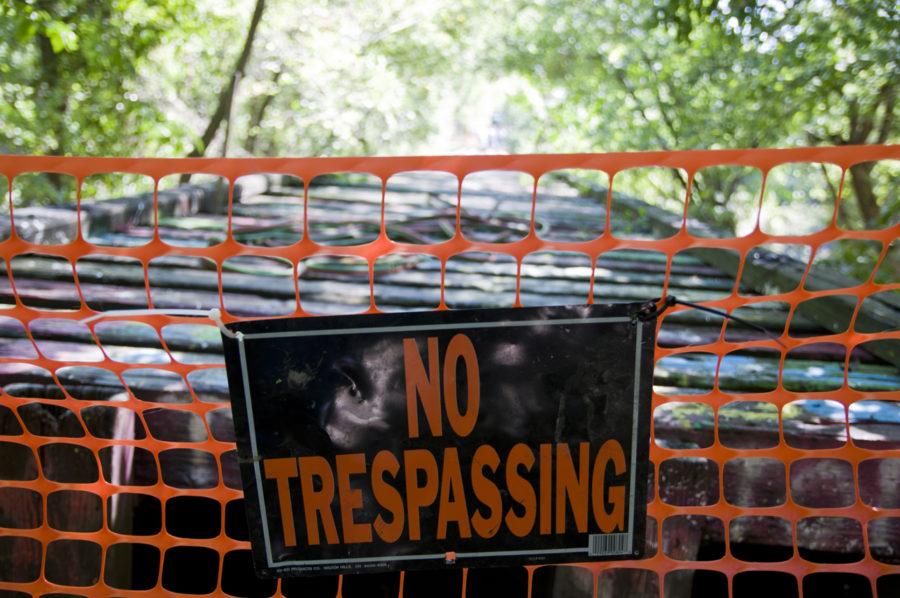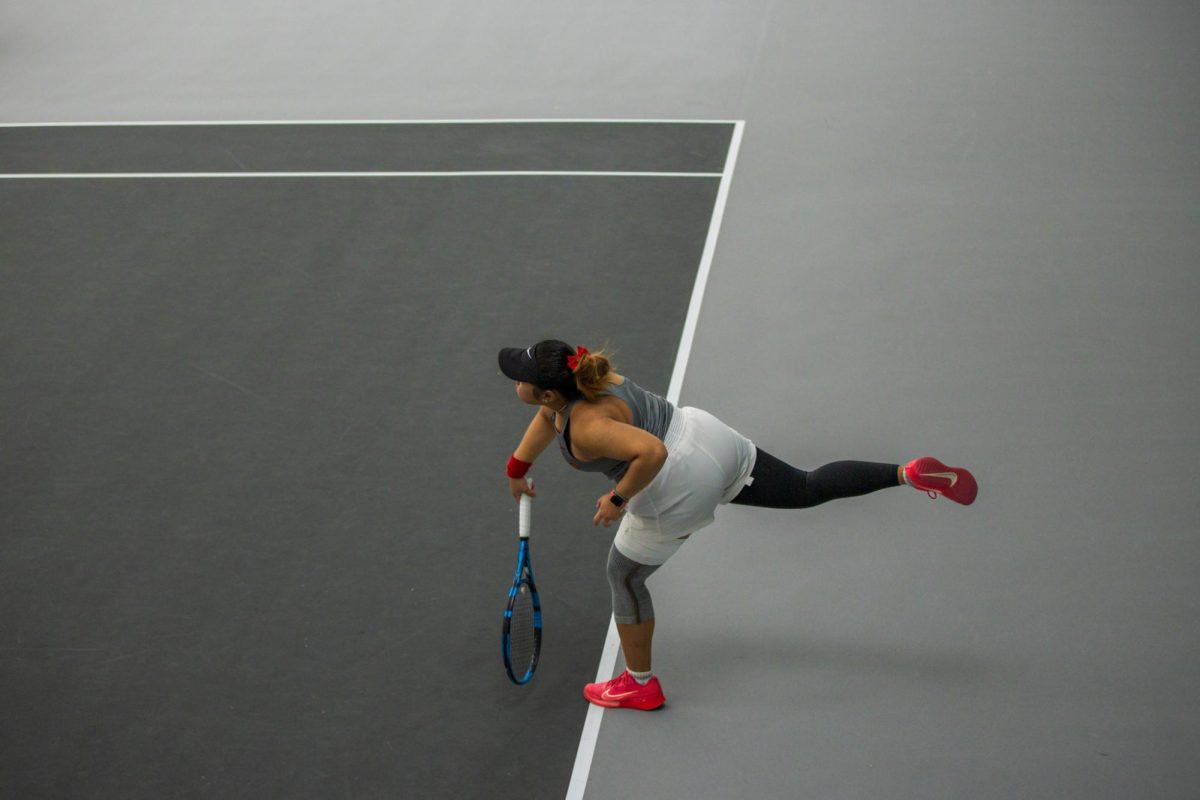Dinkey Bridge destruction distresses local artists
August 29, 2010
The painted wooden ties of Dinkey Bridge lay in a colorful heap at the end of North Riverside Drive. Looming 40 feet over Squaw Creek, the 206-foot-long skeleton of steel beams behind the pile gave the impression of a bird stripped of its feathers. The removal of these boards, covered in designs and poetry by local artists, was the first step excavating contractor Mike Howard took in the destruction of the bridge, which began at noon on Friday.
“What’s your story?” read one board. Smoky swirls of paint spread across several of the ties, and an 18-line poem covered one side of a beam.
Howard had been hired by Union Pacific Railroad, owner of Dinkey Bridge, to tear it down. He was instructed to haul all the pieces to a landfill, but instead had been saving some of them.
“There are some that are too good to throw away,” Howard said. “The time and the brain power that went into them.”
Members of the Historical Society, as well as Nitin Gadia, an Ames resident who actively petitioned to save the bridge, attended the demolition to see what artwork they could salvage for a future museum exhibit.
“We want to save 10 of the ties so that kids can experience walking across it,” said Dennis Wendell, curator of the Ames Historical Society museum.
“We think the bridge is historic because of its function,” said Alan Spohnheimer, also of the Ames Historical Society, “but in past years it’s become popular with some of the high school and college kids who like to hang out and express their artwork.”
Dinkey Bridge originally served as a railroad track connecting Iowa State to downtown Ames. It was nicknamed “Dinkey” after the public trolley line that ran across it and around campus. After the train system was replaced by a bus service in 1929, the tracks were removed, but residents continued to use the bridge for transportation and eventually as a way to express art. With no railings, however, Union Pacific saw it as a liability risk and commissioned Howard to tear it down.
“Every college kid who walks across it wants to kill me,” Howard said, “but I’m just doing my job.”
Gadia began a petition to save the bridge in March and sent it to both Union Pacific and the Ames City Council.
“I just thought it would be a good project to try and save the bridge,” Gadia said. “People use the bridge right now and it’s a beautiful bridge that people care about.”
He began a Facebook group entitled “Save the Dinkey Bridge,” which quickly accumulated more than 800 members.
Gadia said Union Pacific offered to sell Dinkey Bridge to the city of Ames in 2009, eventually reducing the offer to a donation. At the next few meetings, the City Council weighed the options and cost of renovation.
“The city was interested in taking the bridge,” Gadia said, “and they wanted to ask a small proportion of the cost of demolition to cover renovations.”
After discovering the cost of demolition would be around $200,000, the city asked Union Pacific for $30,000, a request the railroad company turned down.
“The bottom line was [Union Pacific was] afraid of the liability of the bridge,” Gadia said. “They worried that if it became a pedestrian bridge, then all these people going across the bridge would cut across the parallel track that is a current railroad.”
Despite the efforts of Gadia and a few other local activists, demolition of the bridge began last week and is scheduled to continue into next week.
“My feeling is that it could have been saved,” Gadia said, “but it’s such a complicated issue and there’s only so much I could have done about it by myself.”
Those who spent time at Dinkey Bridge or contributed to the artwork have expressed their disappointment on the Facebook page.
We’re all looking for somebody to blame,” Gadia said, “but there is nobody to blame in this.”
Some pieces of the bridge will be preserved in a museum exhibit; others will be tossed. The theme of much of the Dinkey Bridge artwork is experiencing life and appreciating real beauty. As one tie reads, “For now we are young. Let us lie in the sun and count every beautiful thing we can see.”







